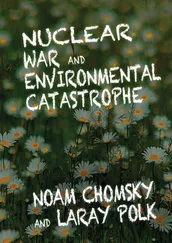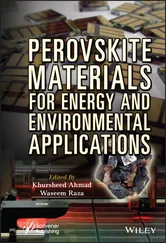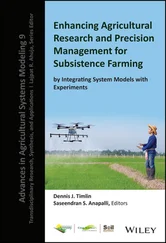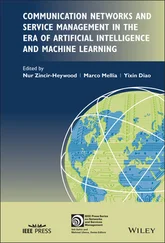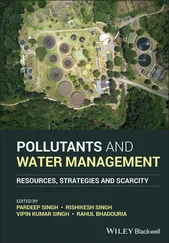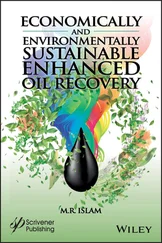In temperate freshwater peatlands, the largest carbon pool occurs in their organic peat soils, with average organic C accumulation ranging from 40–80 g C/m 2/yr (Roulet et al., 2007; Frolking et al., 2011). Craft et al. (2008) found accumulation rates ranging from 49±11 (standard error, SE) g C/m 2/yr to 86 (maximum) g C/m 2/y for temperate freshwater peatlands across a latitudinal gradient in the US. However, C accumulation rates can vary from 7–300 g C/m 2/yr (Gorham, 1991; Turunen et al., 2002; Kolka et al., 2011). In these systems, soil accretes slowly, with accretion rates ranging from 0.3 to 10.3 mm/yr. Total biomass of aboveground and belowground components of vegetation in peatlands is variable, depending on the species composition of the vegetation present. In relatively open peatlands, vegetation biomass can be small (e.g., 760 g/m 2) but in forested peatlands, the aboveground and belowground components of vegetation biomass can be much higher (e.g., 13,800 g/m 2to 20,000 g/m 2)(Gorham, 1991; Brinson & Blum, 1995). The authors assume a carbon content between 0.441 (for herbaceous‐dominated) and 0.501 (for woody‐dominated); this equates to approximately 334 g C/m 2to 10,000 g C/m 2in carbon mass (Martin et al., 2018; Byrd et al., 2018). Increased productivity aboveground, however, does not necessarily imply gains in soil C pool since soil response depends on the interaction of both soil and plant functions, many of which are still understudied (Trettin & Jurgensen, 2003).
For the Northern Hemisphere, estimates of the total C stored in peatlands ranged between 270–604 PgC (Gorham, 1991, Turunen et al., 2002; Frolking et al., 2011; Yu et al., 2014). In North America (including Alaska and Canada), peatlands store approximately 125 PgC (Bridgham et al., 2006). For the conterminous United States, the most recent estimate (Kolka et al., 2018) for total temperate wetland carbon stock from the Second State of the Carbon Cycle Report (SOCCR2) was 13.5 PgC (mainly from peatlands). The China Second Wetlands Survey was used to derive aboveground wetland carbon stocks of 0.22 PgC and soil wetland carbon of 16.65 PgC (Xiao et al., 2019). The SOCCR2 report provided estimates ~1 PgC for Puerto Rico and Mexico. Estimates for other temperate countries were unavailable, i.e., for Europe, India, Japan. Thus, studies are needed to represent these regions and their wetland carbon stocks.
In temperate zones, land‐use activities like water management and drainage are significant contributors to wetland carbon loss (Armentano & Menges, 1986; Richardson et al., 2003; Reddy et al., 2015). Catastrophic wildfires in hydrologically altered temperate peatlands are also common drivers of wetland carbon loss (Page et al., 2009). In one study, emissions during a single fire event measured approximately 3,600 g C/m 2(Turetsky et al., 2011). Many freshwater peatlands are also vulnerable to impacts from sea level rise. It is estimated that approximately 150,000 km 2of freshwater peatlands are located less than 5 m in elevation (Henman & Poulter, 2008), highlighting the need to understand the impacts on carbon pools and fluxes. In a coastal freshwater peatland in North Carolina, USA, total existing carbon storage (peat and vegetation) ranged between 155.5 TgC and 201.0 TgC, with potential losses between 99.4–128.0 TgC by the end of the century due to inundation from sea level rise (Henman & Poulter, 2008). In low‐lying coastal ecosystems, restoring peatland structure and function can improve climate resiliency as peatlands play a critical role in ecosystem adaptation to sea level rise, by preventing soil loss through oxidation while allowing soil accretion to resume. Restoring peatlands through reintroduction of wetland hydrology (rewetting) can prevent soil carbon loss and ensure these peatlands continue to serve as carbon sinks (Limpens et al., 2008; Lamers et al., 2015; Chimner et al., 2017). Rewetting also has the benefit of reducing the likelihood of catastrophic wildfires (Wurster et al., 2016).
There is a significant amount of uncertainty in temperate wetland carbon stock estimates. Most studies reporting carbon stock estimates are generally focused on either boreal or tropical peatlands, leaving temperate freshwater peatlands largely understudied. Difficulty in differentiating between mineral‐soil and organic‐soil wetlands at landscape‐scales also increases the uncertainty in the areal extents and estimates of carbon stores for temperate wetlands. Drainage and conversion have fragmented and decreased temperate wetland areal extents, making measurements even more difficult. However, with the increasing availability of aerial‐ and satellite‐remote sensing data from both active and passive sensors, opportunities exist to address this knowledge gap. Studies that combine remote‐sensing data, repeat field measurements, and intensive inventories would improve our understanding of these systems and provide a critical baseline for monitoring and forecasting future changes related to climate and anthropogenic pressures in these ecosystems.
Table 1.2 Summary of global wetland carbon stocks. The temperate wetland stock estimate includes the conterminous United States and China
| Wetland Type |
Aboveground stocks (PgC) |
Belowground stocks (PgC) |
Total Ecosystem Stocks (PgC) |
| Mangroves |
1.52–1.75 |
1.93–6.4 |
3.45–8.15 |
| Salt marshes |
– |
0.4–6.5 |
0.4–6.5 |
| Seagrass |
– |
– |
4.2–8.4 |
| Tropical peatlands |
8.5–9.6 |
69–129 |
77.5–138.6 |
| Without permafrost, Boreal wetlands (mineral and organic combined) |
10.0–15.0 |
400–500 |
410–515 |
| With permafrost, Boreal wetlands |
10.0–15.0 |
1672 |
1682–1687 |
| Temperate wetlands (for China, US (lower 48) mineral and organic combined) |
1.2–3.2 |
27.3–38.1 |
29.5–41.3 |
|
|
|
|
| Global total |
21.2–29.6 |
498.6–680 |
519.8–709.6 |
| Global total w. permafrost (1672 PgC) |
21.2–29.6 |
1770.6–1852.0 |
1791.8–1881.6 |
1.5. GLOBAL SUMMARY OF WETLAND CARBON STOCKS
Combining the wetland carbon stock estimates we calculate a global total above and below ground storage of 520–710 PgC, and 1792–1882 PgC with permafrost included ( Table 1.2). Boreal wetlands contribute 88% to the global total due to the high amount of carbon stored in soils, ~500 PgC in non‐permafrost soil and ~800 PgC in perennially frozen soils (Hugelius et al., 2014). Compared with the IPCC 5 thAssessment Report, our estimate is lower by 600–800 PgC, primarily because of the lower estimate in permafrost carbon provided by Hugelius et al. (2014) where the updated carbon density for Gelisol soil order was significantly lower than in the 5 thAssessment Report. Tropical wetlands, mainly peatlands, contain ~124 PgC, with recent estimates from the Cuvette Centrale in the Congo Basin shifting focus from the better‐known deposits found in Southeast Asia (Page et al., 2011). Dargie et al. (2017) found that the extent of Cuvette Centrale peatlands to be five times larger than earlier African estimates, expanding the global extent of tropical peatlands by 29%.
In this chapter we also highlight recent work on “blue carbon” estimates for mangroves and salt marshes, with an estimate also provided for seagrass. Combined, blue carbon stocks range from 8.3–23.1 PgC, which increases the earlier estimates of Chmura et al. (2003) of >10 PgC for coastal‐wetland sediments. The expanding number of coastal field studies, meta analyses, and applications of high‐resolution remote sensing data to distinguish more precisely mangrove habitat have contributed to refining the range of coastal carbon stocks. In addition, the numerous ecosystem benefits provided by coastal ecosystems, such as fish habitat, buffering of storms and tropical cyclones, biodiversity habitat for birds, and fuel and fiber for people, have increased interest in protecting these ecosystems given the numerous co‐benefits they provide. Corals and kelp forests have locally important roles in marine ecosystems but are not significant in terms of the carbon stocks they contain (Howard et al., 2017).
Читать дальше

